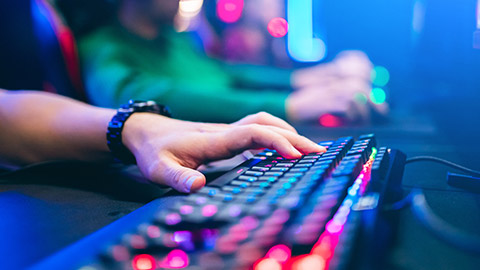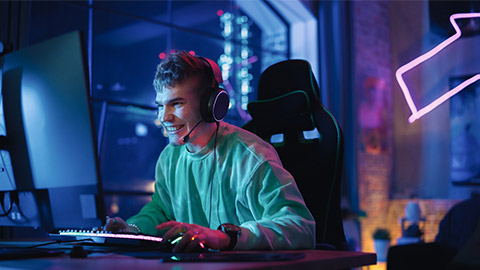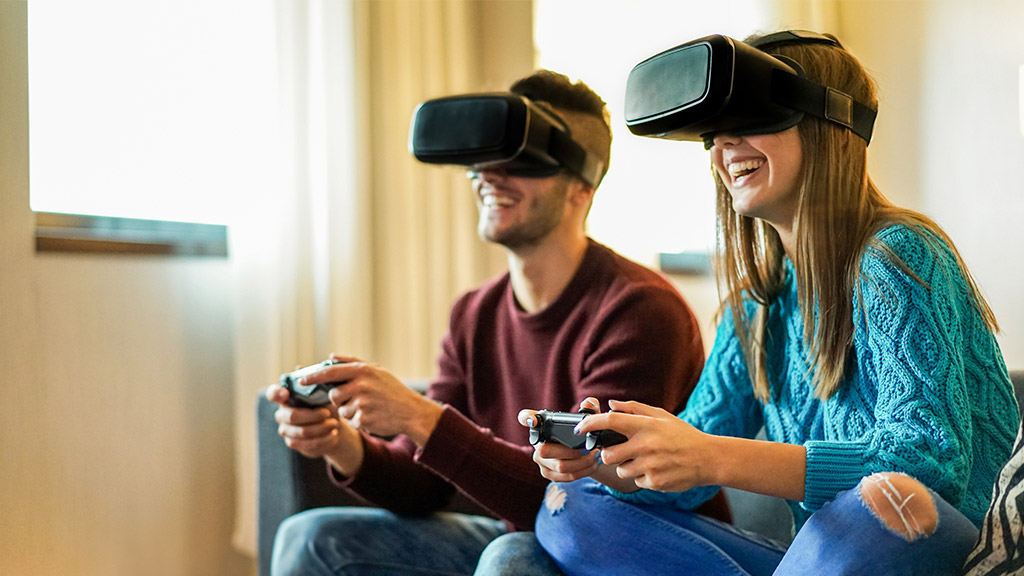Many cognitive psychologists see the brain as a computer. But every single brain is absolutely individual, both in its development and in the way it encounters the world.Gerald Edelman
More than regular sports, eSports rely on cognitive abilities. We could argue that even more than physical ones. But what are cognitive skills? Let’s find out.
Cognitive Skills Defined
Cognitive skills are your brain's core skills to think, read, learn, remember, reason, and pay attention. They work together to process the information you receive and store it in a bank, where they are applied to your day-to-day activities. These activities can vary from school to work and, in this case, eSports.
(Mind Matters 2018)
Cognitive Skills are divided into the following categories:
Let us look at each of these in further detail.
Sustained Attention
Sustained attention refers to the ability to stay focused on a single task. Gamers' focus can seem obsessive, but we like to think of their passion when playing the game.
Divided Attention
True multitasking isn’t possible in gaming; players have divided attention, allowing a player to perform rapid task-switching. For example, in Overwatch, a player needs to pay attention to their teammates, their position, abilities, and health while keeping an eye on the objective and the enemies' position, health and skills while communicating with their teammates.
Selective Attention
Selective attention is the ability to shut out distractions and assign your focus to the task. The task could be all explained in ‘Divided Attention’, but the distraction could be the crowd's noise during a tournament or minor distractions like textures or sound in-game.
Logic and Reasoning
How well can you problem solve? You are always presented with problems to solve. How do you (as a player) analyse the situation and construct a suitable and logical solution? For example, if your team is under heavy fire and low on health. Do you jump in the fight dealing damage or healing your teammates? Another example is presented before you even start the game. Choosing a character/hero/champion, are you skilled enough to play your main or need a counter pick that will benefit you and your team?
Visual Processing
Analyse, interpret and respond accordingly. Visual processing helps you effectively interpret images and think in visual images.
Auditory Processing
Auditory Processing is the ability to process auditory information, register the sound, associate its meaning, and prompt an appropriate response. An example is in Tekken 7. When you land a counter hit, a sound/audio will play to indicate a counter hit.
Processing Speed

Processing Speed refers to how a player can process an action (analyse, interpret and respond) to generate a quick response. Fast reaction times rely on this skill heavily.
Factors influencing cognitive skills
Taha tinana, our cognitive skills, can be coached and refined through repetition and training. But it is essential to note cognitive skills are not only developed by playing the game alone. Other factors impact cognitive development and skills.
It is recommended for athletes to ‘train’ their brain through brain activities such as puzzles and brain teasers and even eating food to boost your cognitive health.
Training can help develop these skills, but sleep, hydration, exercise, and nutrition can boost the effectiveness and recovery of these skills. These have been explained as follows.
- Sleep: 7-10 hours a night is recommended. Research shows that insufficient sleep limits learning and slows down reaction time.
- Hydration: Water accounts for 75% of brain mass. Dehydration can lead to slower reaction times and overall brain function.
- Exercise: Exercise increases the brain’s production of BDNF, a protein that improves the rate at which you learn and encode information.
- Nutrition: Just like the kidney, lungs and heart, the brain is an organ that requires energy from sustenance. Omega-3 and omega-6 (fatty acids), vitamin K, and beta-carotene are ideal nutrients that can help boost brain activity.
Awareness versus Spatial Awareness
Awareness refers to attention to detail, change in pixels, team fights, approaching from various angles, and clashing.
Spatial Awareness refers to the relationship of time and space in a video game. Understanding position, knowing your surroundings and knowledge of how long it will take to travel from Point A to Point B.

Hand-eye coordination and reaction time are two skills that go hand in hand for all athletes in any field.
For example, a hitter in baseball needs to react quickly, not only to the speed of the ball but the position of the ball, while choosing the best swing type to hit the ball (or not). A rugby player needs to have the reaction time for all types of plays, passing, catching, tackling, and being tackled. Hand-eye coordination is included in all of these skills.
Regarding gaming and eSports, any game that requires real-time movement relies partly on fast reflexes. All movements you make within a game, whether it be with a mouse or your finger, can work on developing your accuracy and hand-eye coordination. This makes reaction time a core skill esports athletes need to master. Reaction/response time is defined as how long it takes an athlete's body to react to something. Reaction time depends on three factors:
- Perception: seeing, hearing or feeling a stimulus.
- Processing: being focused enough to process the stimulus.
- Response: Reacting to the stimulus with enough motor agility to act with a good response time.
Easier way to break it down is input, cognitive processing, output.
Click on each of the following headings for examples.
- Input: You see a ball coming towards you (perception)
- Cognitive processing: Assess options to not be hit
- Output: Crouch to the dodge the ball, or catch the ball (Response)
- Input: As a sniper you notice players running across the map
- Cognitive processing: Assess the situation (kill or hide)
- Output: Aim and shoot
Healthy lifestyle habits, practice, repetition, a strong mindset and mental preparation are key factors to building stronger reaction time.
Practice and Repetition
There are plenty of skills and abilities to learn in-game. Combos and punishes in fighting games, callouts and line-ups in first-person shooters, resource management and champion knowledge in MOBA’s.
You can use various techniques to obtain practice for reaction times.
Using tools such as aim trainers are a great way of getting practice.
These aim trainers are designed to get quick and easy practice of specifically FPS games, but it can also help with your general reaction speed and hand-eye coordination. Here is an example of one if you want to try it out!
Healthy Lifestyle Habits
The following are some brief examples of healthy lifestyle habits, we will cover these in further detail as we progress through the module.
Sleeping habits
- 8-10 hours of sleep
- Avoid a bright screen 1-2 hours before sleeping
- Create a bedtime and wake-up routine
Healthy snacks
- Eat healthy snacks 1-2 hours before a practice.
- Snacks should include both protein and carbohydrates like Greek yogurt or peanut butter on toast
Warm-up
- Warm up Muscles you intend to use during the session e.g. neck, arms, hands etc.
Mindset Preparation
Put yourself in a positive state of mind. Before, during, and after in-game performance. Being physical peak mixed with a strong mental game is key to success in any form of competition.
Vision is key to hearing, developing eye health and picking up visuals. Improving one's eyesight is not only good for performance but general health.
When light hits the light-sensitive layer of tissue at the back of the eye, known as the retina, and special cells called photoreceptors turn it into electrical signals. These signals travel from the retina through the optic nerve to the brain, where they are interpreted into the images that we call our vision.
– ezone esports
Watch: Doctor Explains Extraocular Muscle Movements & Eye Anatomy (2:14)
Vision has a direct relationship to cognitive abilities (input, process, output). A player uses their vision to process what is happening and react appropriately. Without strong vision, a player is at a major disadvantage especially if the opponents have great vision. Understanding the current status of your visual is the first step to stronger vision.
Watch: Doctor Gives 3 Tips for Eye Relief – YouTube’ (2.18 mins)
Complete the following activity. Click the circles to navigate between the tasks.
Key aspects of vision in eSports
Dr. Joseph LaPlaca has broken this down into three categories: primary, secondary, and tertiary. Primary being the most important and tertiary being least important. All groups are important for an esports athlete. This is a condensed version of the full infographic.
Primary Visual Skills
Saccadic System
Quick, simultaneous movement of both eyes from one point to the next in the same direction. From small movements scanning the computer screen for UI elements (ammo count, health points, map etc) to larger movements gazing a stadium looking for your number #1 fan.
Smooth Pursuit
Research has shown that the more accurate, smooth pursuit movements better the prediction of the trajectory of an object.
Smooth pursuit is an eye motion skill that allows you to track and follow a moving object.
Dynamic Visual Acuity
How the eye tracks an object in motion. How well can the eyes maintain focus on a stationary and moving object?
Choice Reaction Time
The speed at which the brain interprets and reacts to visual stimuli when given one or more choices.
Hand-Eye Coordination
The efficiency of your limbs and body reaction can react to your perception of the world around us. Watching a ball drop and placing your hand in the correct position to catch the ball, or any rhythm game (DDR, Guitar Hero etc).
Visual Reaction Time
How fast do you react to an agent coming around a corner or quick scoping an enemy from across the map? A good reaction time is 400 milliseconds, in esports required reaction time is around 200 milliseconds.
Secondary Visual Skills
Peripheral Vision
Peripheral vision is what you see out of the corner of when you are looking straight ahead. This allows you to see what is happening around you while still allowing you to focus on what’s in front of you.
Visual Memory
The ability to memorize a fast moving, complex picture of people and things. This helps you with knowing your teammates and opponents position.
Tertiary Visual Skills
Binocular Vision
Is the ability to maintain to focus on a single object with both eyes. To gain a wider total field of view through muscular growth via training.
Eye training exercise
The follow are eye exercise for beginners. 4–5 days a week, 4–5 minutes per drill.
Purpose: to work on developing strength in the focusing system. Jumping back and forth between objects near and far.
- Hold a pencil out at arm’s length in front you.
- Bring it towards you.
- When you can no longer focus on the pencil, push it out slightly until you can focus on it.
- Hold it there.
- Alternately, focus on the pencil tip, then an object in the distance (consider something small, a letter of a word or a small block in the distance), then back to the pencil.
Purpose: to expand your peripheral vision and awareness of objects.
- Hold a pencil at arm’s length in front of you.
- Focus on an object beyond the pencil.
- Move the pencil (maintain a slow pace) to the side until it is out of your field of vision.
- Then bring the pencil back in front of you.
- Repeat.
- You can also move the pencil up and down rather than side to side.
Purpose: to work on the system in charge of how your eyes move together while following an object or image.
- Hold a pencil at arm’s length in front of you.
- Make a figure 8 design in the air
- Without moving your head and using your eyes, follow the pencil tips through the air.
- You should move the pencil slowly initially.
- You should also move the pencil in a small figure 8 pattern, to begin with.
As you begin to become more proficient at this, you can increase the speed and the size of the figure 8.
